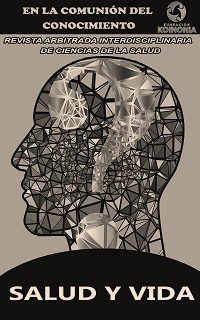Knowledge and practice of nurses in the aspiration of secretions from critical patients
DOI:
https://doi.org/10.35381/s.v.v7i1.3590Keywords:
Intensive care units, hospital services, respiratory distress syndrome, adult, (Source: DeCS)Abstract
Objective: To analyze the knowledge and practice of nurses in the aspiration of secretions from critical patients. Method: Descriptive documentary. Results and Conclusions: It was possible to highlight and several authors agreed that for the aspiration of secretions there are two suction mechanisms which are an open system and a closed system, the latter is the most appreciated by the nursing staff since the suction probe is coupled to the suctioner and is not directly manipulated by the nurse, and thus avoids the spread of respiratory diseases, This system is the most used in patients with COVID and pneumonia in intensive care areas. These two systems should be socialized to all personnel working in the ICU through training to contribute to the sequential steps of the technique, avoiding delays that lead to complications and put the patient's life at risk.
Downloads
References
López Martín I. Sistemas de aspiración de secreciones cerrados: indicaciones y cuidados [Closed secretion aspiration systems: indications and care]. Ene. 2021;15(1):1051.
Hughes A, Lambert EM. Drooling and Aspiration of Saliva. Otolaryngol Clin North Am. 2022;55(6):1181-1194. https://doi.org/10.1016/j.otc.2022.07.007
Houzé MH, Deye N, Mateo J, et al. Predictors of Extubation Failure Related to Aspiration and/or Excessive Upper Airway Secretions. Respir Care. 2020;65(4):475-481. https://doi.org/10.4187/respcare.07025
Moser CH, Peeler A, Long R, et al. Prevention of Tracheostomy-Related Pressure Injury: A Systematic Review and Meta-analysis. Am J Crit Care. 2022;31(6):499-507. https://doi.org/10.4037/ajcc2022659
Moser CH, Peeler A, Long R, et al. Prevention of Endotracheal Tube-Related Pressure Injury: A Systematic Review and Meta-analysis. Am J Crit Care. 2022;31(5):416-424. https://doi.org/10.4037/ajcc2022644
Fernández García ER, Corona Meléndez JC. Tubo endotraqueal con aspiración subglótica y riesgo de neumonía asociada a ventilador [Subglottic secretion drainage tracheal tube and risk of ventilator-associated pneumonia]. Med. crít. (Col. Mex. Med. Crít.). 2018;32(1):34-40.
Zhao L, Liu L, Chen J, Yang C, Nie J, Zhang M. Zhonghua Wei Zhong Bing Ji Jiu Yi Xue. 2017;29(7):624-628. https://doi.org/10.3760/cma.j.issn.2095-4352.2017.07.010
Choi MI, Han SY, Jeon HS, et al. The influence of professional oral hygiene care on reducing ventilator-associated pneumonia in trauma intensive care unit patients. Br Dent J. 2022;232(4):253-259. https://doi.org/10.1038/s41415-022-3986-3
Strametz R, Pachler C, Kramer JF, Byhahn C, Siebenhofer A, Weberschock T. Laryngeal mask airway versus endotracheal tube for percutaneous dilatational tracheostomy in critically ill adult patients. Cochrane Database Syst Rev. 2014;2014(6):CD009901. https://doi.org/10.1002/14651858.CD009901.pub2
Strametz R, Bergold MN, Weberschock T. Laryngeal mask airway versus endotracheal tube for percutaneous dilatational tracheostomy in critically ill adults. Cochrane Database Syst Rev. 2018;11(11):CD009901. https://doi.org/10.1002/14651858.CD009901.pub3
Swingwood E, Voss S, Tume LN, et al. Mechanical insufflation-exsufflation to promote extubation success in critically ill adults on intensive care: protocol for a randomised controlled feasibility trial. Pilot Feasibility Stud. 2023;9(1):129. https://doi.org/10.1186/s40814-023-01362-7
Dsouza R, Spillman DR Jr, Barkalifa R, et al. Efficacy of endotracheal tube suctioning in intubated intensive care unit patients determined by in vivo catheter-based optical coherence tomography-a pilot study. Quant Imaging Med Surg. 2021;11(1):1-8. https://doi.org/10.21037/qims-20-549
Lema-Zuluaga GL, Fernandez-Laverde M, Correa-Varela AM, Zuleta-Tobón JJ. As-needed endotracheal suctioning protocol vs a routine endotracheal suctioning in Pediatric Intensive Care Unit: A randomized controlled trial. Colomb Med (Cali). 2018;49(2):148-153. https://doi.org/10.25100/cm.v49i2.2273
Parida PK, Kalaiarasi R, Gopalakrishnan S, Saxena SK. Fractured and migrated tracheostomy tube in the tracheobronchial tree. Int J Pediatr Otorhinolaryngol. 2014;78(9):1472-1475. https://doi.org/10.1016/j.ijporl.2014.06.011
Mahattanasakul P, Kaewkongka T, Sriprasart T, Kerekhanjanarong V. Fracture Outer Metallic Tracheostomy Tube as an Airway Foreign Body. Indian J Otolaryngol Head Neck Surg. 2022;74(Suppl 2):1752-1756. https://doi.org/10.1007/s12070-019-01744-5
Published
How to Cite
Issue
Section
License
Copyright (c) 2023 Lourdes Patricia Córdova-Salguero, Adisnay Rodríguez-Plascencia, Ariel Romero-Fernández, Nairovys Gómez-Martinez

This work is licensed under a Creative Commons Attribution-NonCommercial-ShareAlike 4.0 International License.
CC BY-NC-SA : Esta licencia permite a los reutilizadores distribuir, remezclar, adaptar y construir sobre el material en cualquier medio o formato solo con fines no comerciales, y solo siempre y cuando se dé la atribución al creador. Si remezcla, adapta o construye sobre el material, debe licenciar el material modificado bajo términos idénticos.
OAI-PMH: https://fundacionkoinonia.com.ve/ojs/index.php/saludyvida/oai.









